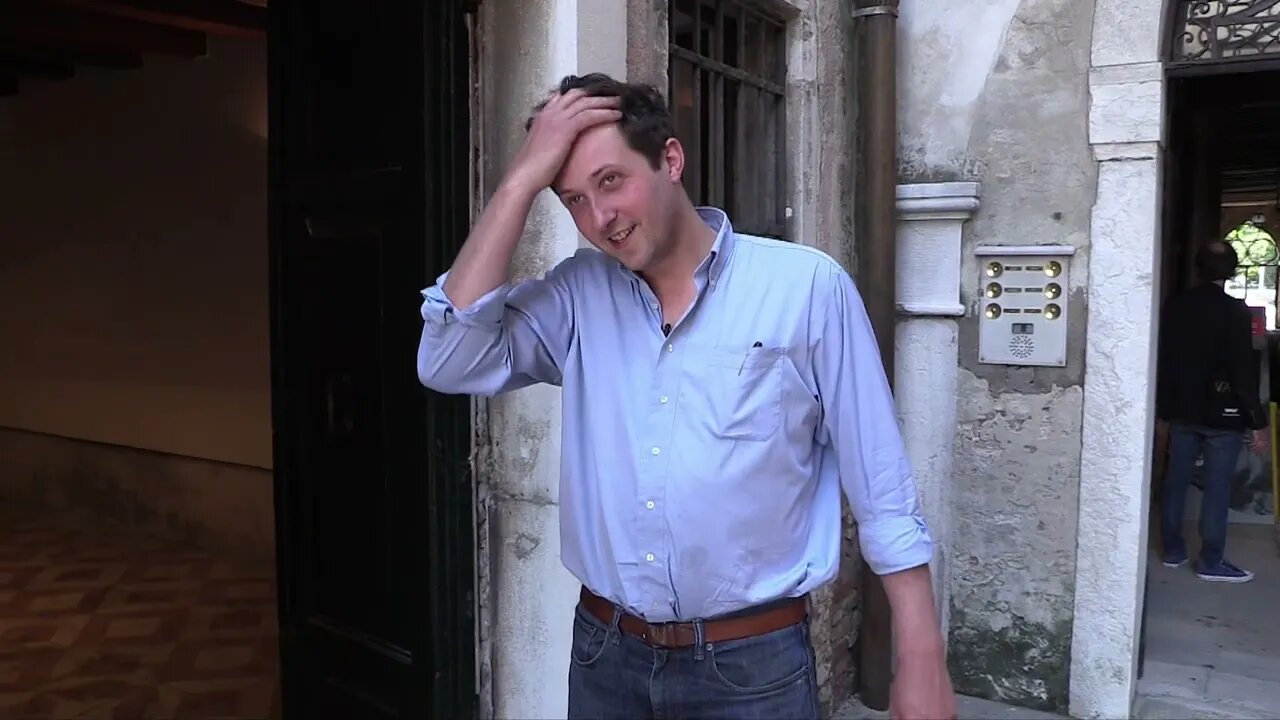Premium Only Content

James Capper: the making of Six Step
We visited James Capper over the course of four months, first filming him in his London studio where he explained the initial concept for his sculpture Six Step and finally following him to its installation at the Venice Biennale in 2015 ‘Drawing is the most important place where a concept begins,’ James Capper says, explaining the start point of his fantastical machines, which require a huge amount of planning and preparation before manufacture. Drawing, he says, allows him to “zone out”, to develop things that he wouldn’t be able to do physically in the studio. Capper takes us through the painstaking process of dreaming up and then creating his new machine, Six Step. He starts with pen drawings on paper. Drawings, he says, are not aesthetic add-ons, but an old-school draughtsman’s method of coming up with ideas. After arriving at a concept, it is necessary to look at the engineering, which involves him and a draughtsman sitting once a week, number crunching. The drawings are then refined and redrawn before being 3D modelled for precision on computer, with the help of an AutoCAD designer. Finally, the sculpture is fabricated in his studio in Bermondsey, south-east London. These days, he works with laser-cut steel plate, which, he says, “feels more like ship-building. It means you can go off the square.” Derived from a protototype called Hydrostep, the amphibious Six Step has a selection of interchangeable tools for mark-making and six telescopic legs and a boat-like belly that allows it to navigate a wide variety of terrain, including the salt-marsh, low-water area around Venice, where Capper finally shows us the sculpture on show at the Venice Biennale.
Six Step was commissioned by Alma Zevi, and shown at the Marie-Rose Kahane studio in Venice, 29 April – 2 October 2015.
Filmed by MARTIN KENNEDY
-
 3:31:01
3:31:01
FreshandFit
8 hours agoAfter Hours w/ Dan Cates
88K97 -
 1:37:17
1:37:17
Badlands Media
8 hours agoBaseless Conspiracies Ep. 128: The Accelerationist Cults Grooming Kids into Terrorism with BX
111K33 -
 2:44:29
2:44:29
TimcastIRL
10 hours agoBail DENIED For Leftist Who FIREBOMED Democrat Governor's Mansion, Mangione Effect | Timcast IRL
235K95 -
 24:05
24:05
Glenn Greenwald
14 hours agoAs U.S. Censorship Escalates, New Poll Reveals Declining Support for Israel: UNLOCKED Episode
178K137 -
 2:14:50
2:14:50
We Like Shooting
1 day ago $9.77 earnedWe Like Shooting 606 (Gun Podcast)
56.2K5 -
 1:00:41
1:00:41
Donald Trump Jr.
15 hours agoMake Main St Great Again, Interviews with Alex Marlow & John Phillips | TRIGGERED Ep.233
194K55 -
 1:45:23
1:45:23
megimu32
11 hours agoON THE SUBJECT: 2008 Called.. It Wants Its Chaos Back!
68.4K20 -
 1:01:53
1:01:53
BonginoReport
14 hours agoPolitical Violence on the Rise in America - Nightly Scroll w/Hayley Caronia (Ep.26) - 04/14/2025
169K104 -
 1:32:42
1:32:42
BlackDiamondGunsandGear
8 hours agoThey Don’t want you to Purchase 2A Related Products?
53.9K4 -
 2:53:36
2:53:36
Joe Pags
11 hours agoThe Joe Pags Show 4-14-25
117K